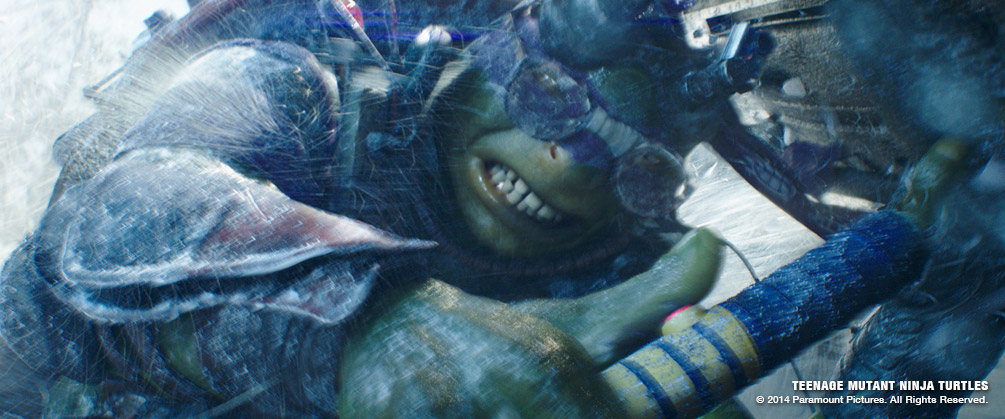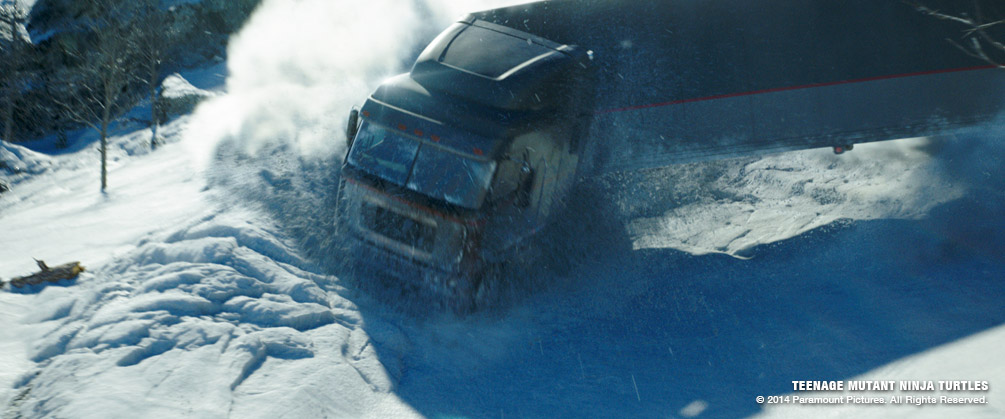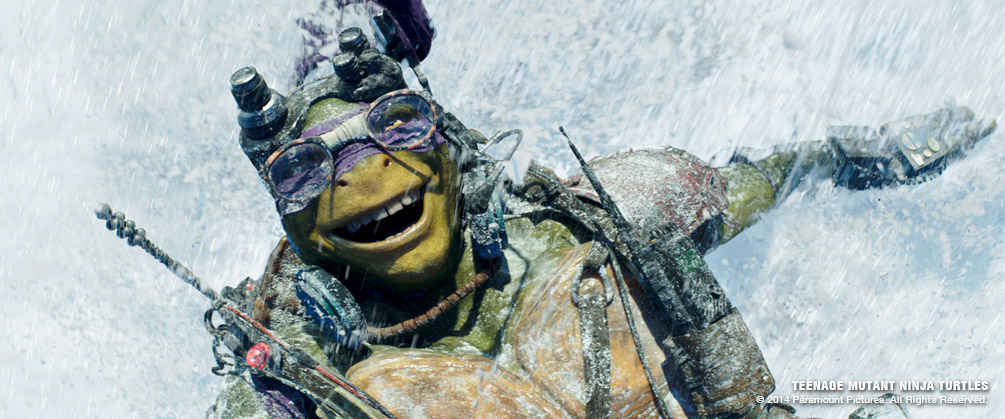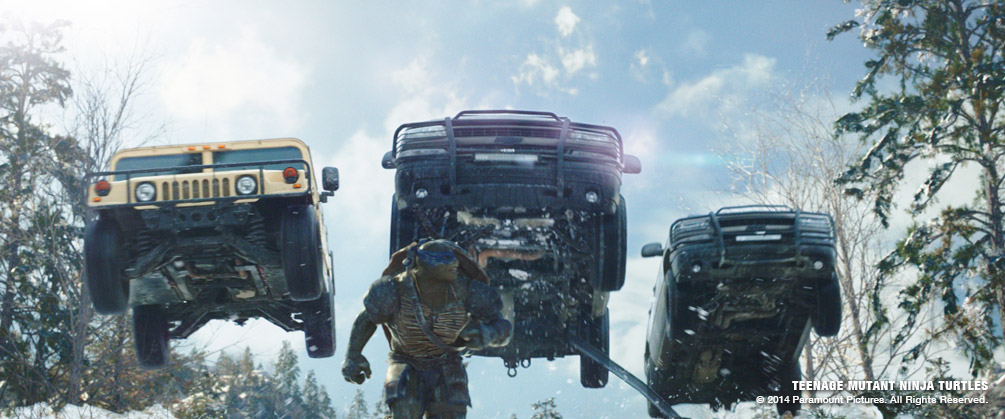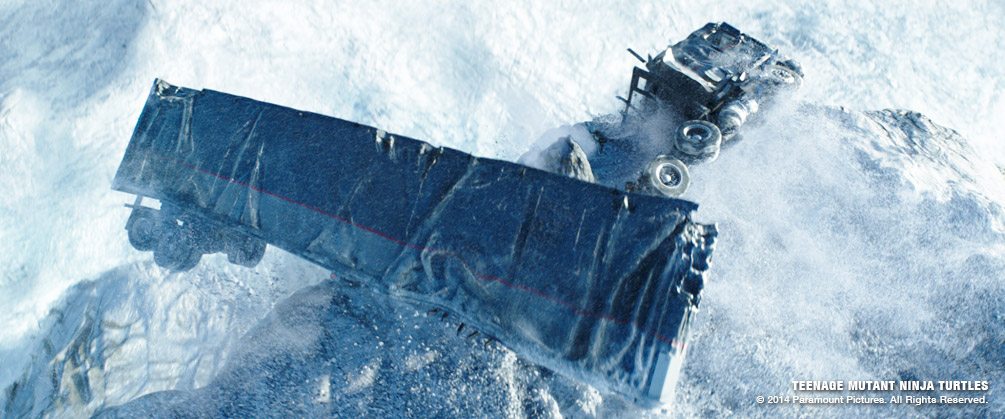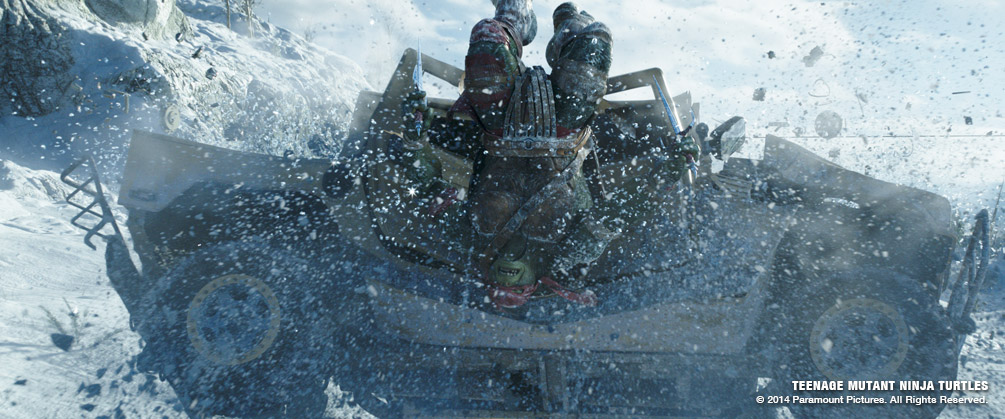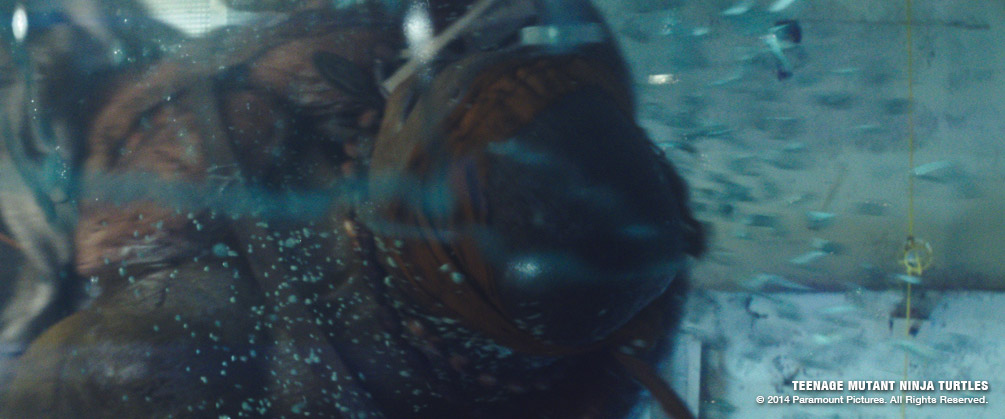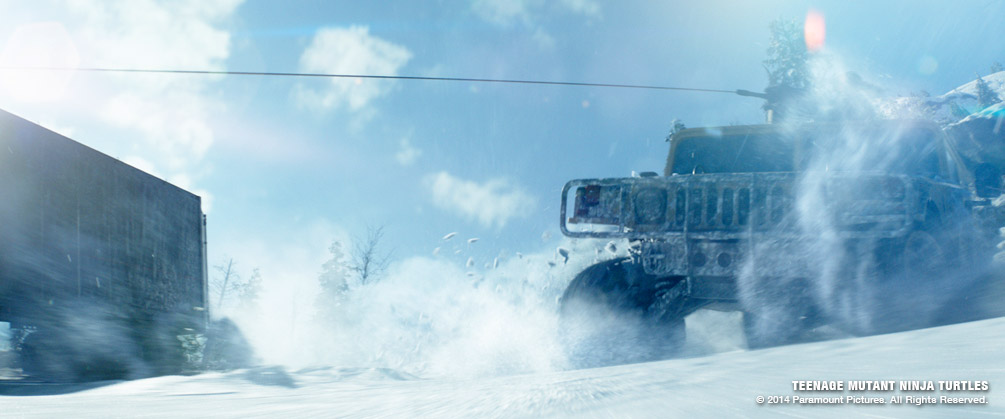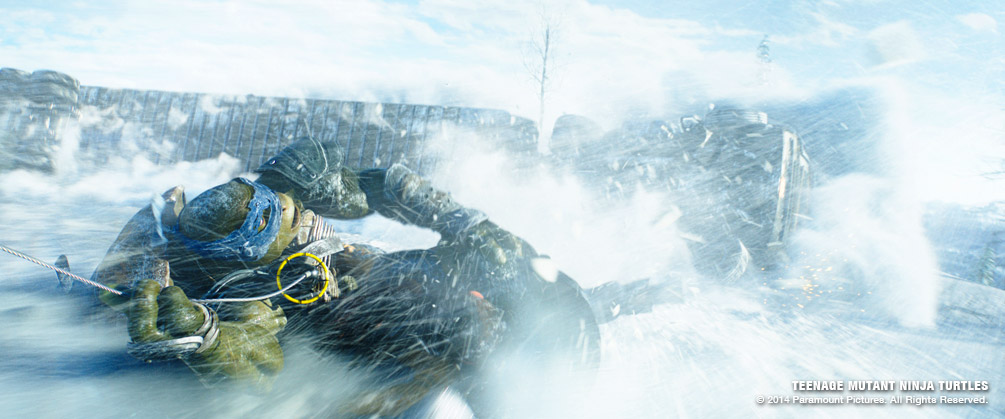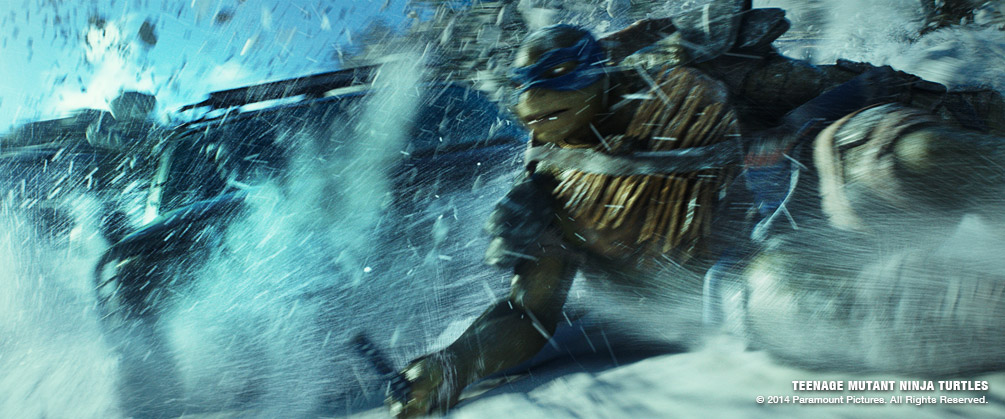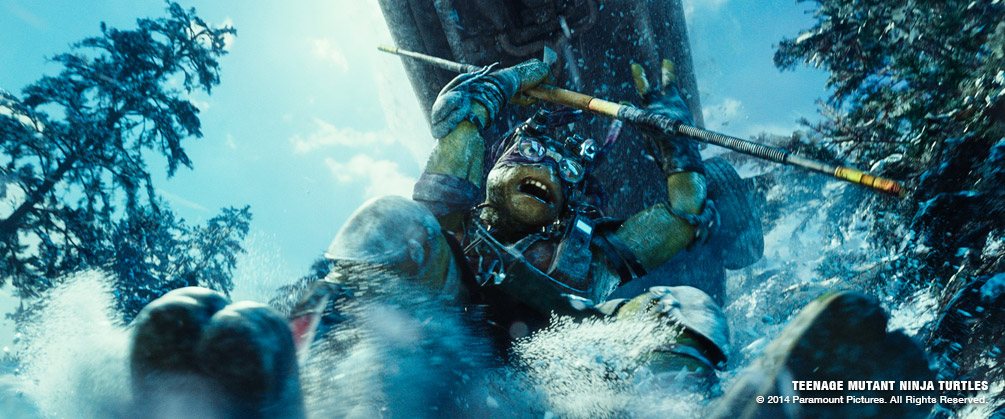Teenage Mutant Ninja Turtles Case Study
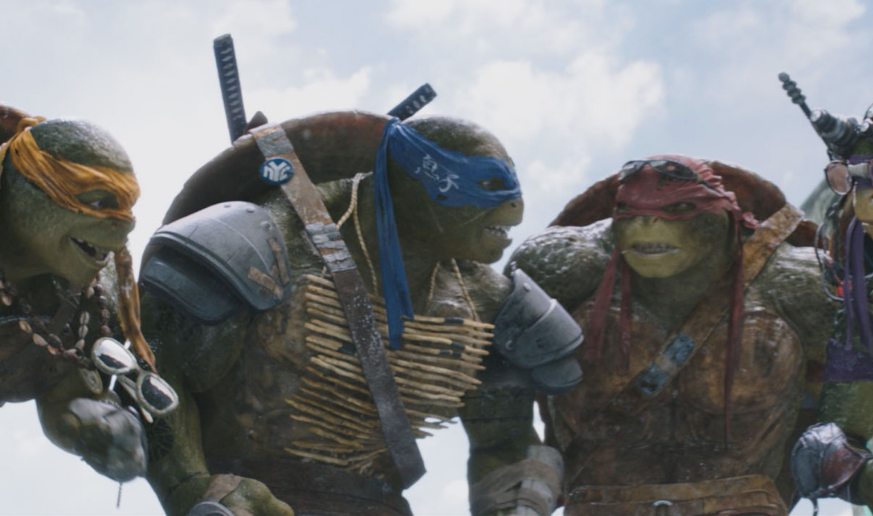
Case Study
For the 2014 reimagining of Teenage Mutant Ninja Turtles, Image Engine was tasked with putting together a number of killer visual effects shots for everyone’s favourite heroes in a half shell, including one of the film’s most complex, important and exciting sequences: a bodacious mountainside chase through snowy climes, involving characters, vehicles and a whole lot of cowabungas!
For the 2014 reimagining of Teenage Mutant Ninja Turtles, Image Engine was tasked with putting together a number of killer visual effects shots for everyone’s favourite heroes in a half shell, including one of the film’s most complex, important and exciting sequences: a bodacious mountainside chase through snowy climes, involving characters, vehicles and a whole lot of cowabungas!
Heroes in a Half Shell. Image Engine Power!
Carrying out work on approximately 150 shots – from the film’s total of around 800 to 900 – in an 11-month span of time was no mean feat for the team of Image Engine creatives tasked to the project. However, an innovative and committed approach saw great success, with the finished product complementing other work on TMNT carried out by lead vendor Industrial Light & Magic and visual effects supervisor Pablo Helman.
“This was our second collaboration with ILM and Pablo,” remarks visual effects executive producer Shawn Walsh. “It featured a massive increase in complexity comparative to our work with ILM on Battleship.”
This huge step up meant that the Image Engine wheelhouse had to fire on all cylinders to meet the demands of 100% computer generated imagery, which frequently included multiple hero computer generated creatures, several vehicles and expansive environments.
A Visual Effects Mountain to Climb
The sheer scale of the mountain environment required all of Image Engine’s departments to pull together and work as fluidly and nimbly as they could. “Everything was inter-reliant,” says CG supervisor Rhys Claringbull. “The environments, camera, animation, effects and lighting all had to work together seamlessly.”
Jeremy Stewart, animation supervisor, adds: “A lot of shots were 100% computer generated, so in those cases we had to choreograph the camera, animate multiple hero characters and several computer generated vehicles. And then, all of those components would affect the snow simulations, so we had to create chunks, spray, powder and so on.
“A huge part of making the sequence come together involved re-choreographing elements to make them work together. With all of the iterative snow simulations making animation read differently, these revisions were necessary, but we were more than up to the task.”
All of this action was taking place in a scale-correct computer generated environment capable of being rendered with a 360degree camera. This allowed the client greater flexibility when it came to art directing the scene of the ninja turtles hurtling down the mountainside. The freedom of being able to place and edit the environment, and the impressive work carried out to build the environment based on previs instructions, was achieved by a great deal of back-and-forth collaboration with ILM’s Helman and visual effects supervisor Robert Weaver.
Rendering From Every Angle
Barry Poon, computer generated asset supervisor, explains how this meant Image Engine had a great deal of creative input into the environment work: “We had reference assets that everyone looked at together, and there were certain images that the client picked as key art they liked,” he says. “Of course, the client had final say on what they liked and pushed the sequence in certain directions, but we had to take it to a certain level of convincing photoreal execution before they could put that input in. That’s an additional level of complexity in building computer generated environments these days.”
One area that saw extra effort required was lighting. The ability to render in a 360degree camera meant that, rather than just lighting the scene for the camera, the environment would have to be lit consistently throughout, even if the light sources themselves were from other directions and areas. “That was quite challenging; to make the environment look consistent but also flexible enough to enable light coming from different directions,” says lead lighting artist Yuta Shimizu. “This was done simply to make it look cool.”
As well as the lighting, numerous other asset-based elements also had to be flexible to meet the ever-evolving art direction of the snow slope environment, as directed by the client. To work on elements such rocky outcroppings, different types of trees and foliage, and snow and ice ground cover, Image Engine developed an internal system that could efficiently map the geometry of the mountain and enable artists to ‘paint’ various environmental objects on top of it. In addition, the slope angle of the mountainside itself was balanced to achieve the ‘perfect steepness’ for the ninja turtles to hurtle down as the action played out.
Collaborating With Industrial Light and Magic
Characters and vehicles were created at ILM and Image Engine and shared across both facilities. As such Image Engine was required to ingest ILM’s assets and match elements like animation rigging, muscle systems, clothing and gear deformation to meet the already high standard set by ILM’s development work. “Although we received assets from ILM we also built a lot ourselves, namely the semi trailer which was the biggest one,” explains Claringbull. “Basically, we needed to cater to ILM’s pipeline when it came to ingesting models and textures to a very fine degree. The naming of the objects had to follow the ILM convention, which is not native to Image Engine and as a result required quite a bit of tool development.”
Although the vast majority of Image Engine’s animation was key framed, for some scenes motion capture data was also sent over from ILM for Image Engine to use as a basis for specific performances. This transfer of data required the Image Engine team to match the existing animation quality produced by a much larger studio, and as a result required the studio to leverage inhouse programming and development. Since most of the sequence was 100% computer generated, Image Engine was only able to use the motion capture as a guideline for certain setups in the complex, action-packed sequence.
“The motion capture data was really useful when we were doing the fight scenes at the estate, where the turtles are doing kung fu and things like that,” says Stewart. “But when they’re sliding down the mountain, that couldn’t be mocapped. We had to choreograph the vehicles, the cameras, the turtles swinging around, sliding over this rough terrain that was bouncing them all over the place. Obviously that was a big challenge, getting the weight to look right, the timing of it all to flow smoothly – it’s a lot to think about!”
For Walsh, the collaborative effort on the scene was a huge moment for Image Engine: “With the industry moving forward towards everincreasing collaboration between facilities, both the hardcore coding and R&D we’ve done, as well as the experience of collaborating intimately with the senior staff at ILM on a massive challenge such as the snow slope sequence, is a key step in Image Engine’s development.”
Epic Destruction!
It shouldn’t be surprising that creating 100% computer generated characters penetrating the surface of the snowy mountainside at up to 100mph with a constantly moving camera is a difficult challenge to figure out. But what about throwing in those computer generated vehicles, too? These vehicles had already been shot practically, so it was up to Image Engine to ensure the computer generated versions looked exactly the same in every way, even when they had to run through a complex destruction animation pipeline.
“The destruction was driven by the animation,” Stewart explains. “There was a lot of discussion about how a door should deform, or how much the Humvee should be dented as Raphael smashed into it. When the semi truck goes over the cliff there was talk of it hitting a tree at one point – it ended up being a rock so all of that changed the modeling for the destruction and how the vehicle would warp and bend.”
Fortunately, the semitrailer truck had been worked on from the inception of the project at Image Engine. It was known that the vehicle would need to be seen from any potential angle, including the interior of the trailer. As such, elements like its destruction could be achieved with the utmost quality, even while inheriting client changes along the way.
Creating the Snow-flow
It was important to get the look of the snow just right in the chase sequence. Early on it was decided the chase would take place on a ‘powder day’, when the ground is covered in fluffy, light and deep powder snow. This meant that interactions with the snow would result in billowing white plumes of frozen dust.
The snow rig was developed in modular components, with each category of different snow types represented by a different tool – something that could be added to a shot by an artist. Characters interacting with the snow required a generic tool to be built to measure how the two would come together – for example, how fast the character was moving when it came into contact with the snow.
Volume simulation involving multiple bounding boxes meant that the resulting simulations would react differently depending on how fast the turtle was moving through it. Then, dust particles were advected through the volume velocity field and solid snow chunks were birthed around the base of the character, which made for a hard pack of snow that would be kicked up and then wash over the character.
Finally, a snow trail was built from the character’s path, stored on the snow’s surface geometry, and then passed to the lighters to deform the snow using displacements at render time. This allowed for very high-resolution detail to be added as the turtles hurtled past the camera.
Additionally, animators were given strict instructions to penetrate characters deep into the snow, meaning a good amount of time had to be spent perfecting the type of particles that were thrown up along the chase. While Image Engine was animating the powder in a physically accurate way, the client changed its request quite drastically, asking that the snow instead be made of chunks.
Thanks to the robust, modular snow components used, however, this change was easy for the artists to implement and output for the updated brief.
Creative, Clever Compositing
Developing the final look of the sequence frequently fell on the shoulders of compositing supervisor Martyn Culpitt, who lead the team assembling the vast array of elements, comprising digital matte paintings, environment renders, complex simulations and the animation of characters and vehicles.
The team would often prep shots with live action elements and supply precomposites to matchmove and animation in the hopes of sticking to plates for some shots. But, as the sequence evolved, moving further and further towards 100% computer generated imagery, this work was relegated to reference. However, the live action components were retained as essential quality control checks and look reference.
Key imagery and reference remained elusive, however. “The issue was that when you’re covering such a huge expanse of space with this style of animation, continuity and matching shot to shot is kinda thrown out the window!” says Culpitt. “Our job is more about getting all the shots to live together from an art direction and exposure perspective. To get this quality of light – something familiar to skiers and snowboarders – was a tough challenge. However, when we nailed it the final product felt really good. It was basically super real, except the huge, green mutant turtles, that is.”
In the Wheelhouse
Overall, the team at Image Engine is rightly proud of its work on Teenage Mutant Ninja Turtles and not only because it was a cool sequence to produce, as Shimizu explained: “We’ve never dealt with that complex an environment build or as many hero characters at the same time, so it was very interesting to see render time or memory usage and things like that from a technical point of view. It’s really helpful data that we have now for other projects in future. The company learned a lot!”
For Walsh, this is just the kind of project that exemplifies what Image Engine is capable of: “This is the kind of work we set up Image Engine to be able to do, which is to say that complex, animationcentric visual effects is in our wheelhouse.”
Image Engine’s collaboration with ILM continued in 2015’s dinosaur behemoth Jurassic World.


